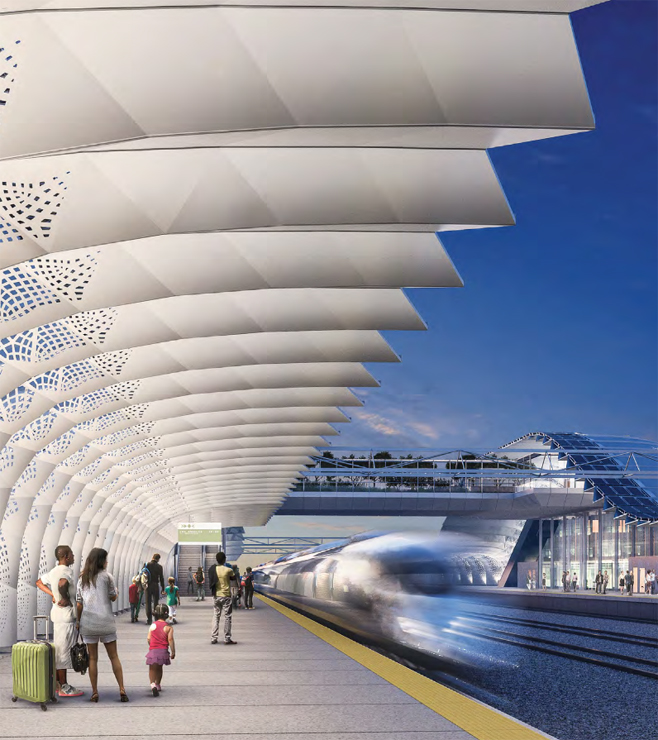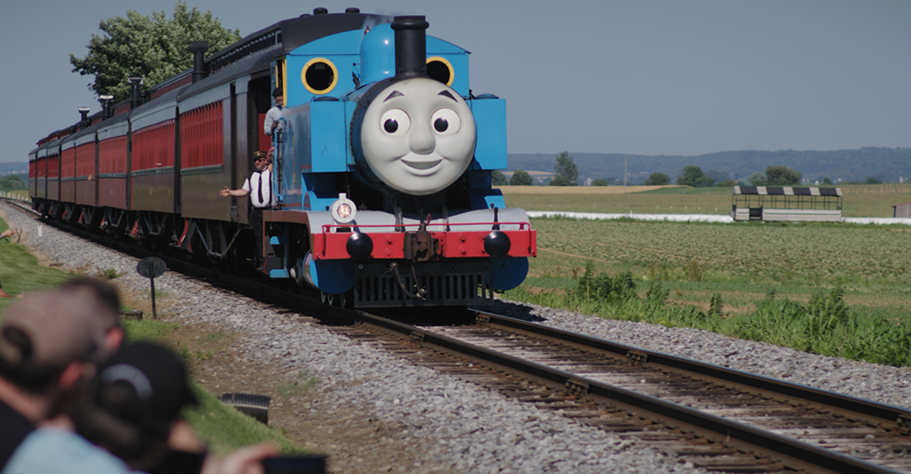
SACRAMENTO, Calif. — A year behind schedule because of three COVID-related delays, the board of California’s High-Speed Rail Authority voted 6-3 Thursday to send a business plan to the state legislature calling for an initial operating segment between Central Valley cities of Merced and Bakersfield, with the possibility of opening that segment as a single-track railroad.
Excluding the populous Los Angeles Basin and San Francisco Bay Area metropolitan regions from the early service means trains will incur an operating loss, according to the authority’s own projections. That, combined with the uncertain prospects for more state and federal funding for the expensive and extensive tunneling needed to reach those metro terminals, accounted for the board’s no votes.
Last summer, the California Assembly passed a non-binding resolution calling for redirecting the remaining $4.2 billion available in state bond authority to other rail projects, primarily in Southern California. Thursday’s negative votes came from Southern California members Ernest Camacho and Martha Escutia, and from Andre Boutros, who was appointed a year ago by Assembly Speaker Anthony Rendon of Los Angeles, author of the resolution.
The agency released the updated business plan in February [see “Revised California high speed rail plan …,” Trains News Wire, Feb. 9, 2021]. The board voted that month to request the legislature to spend the bond money to finish the Central Valley line.
But more of the board’s discussion was taken up by a presentation from the authority’s chief of rail operations, Frank Vaca, who detailed a yet-to-be approved proposal to begin high-speed service on a single-track line to cut costs and speed construction for a 2029 opening.
Initial single-tracking “does not diminish or change any of the operational requirements for the interim service that … includes the 18 trains per day per direction for the service, as well as the 90-minute travel time savings that we’ve relied on,” Vaca said.
He said a single-track railroad could save $1 billion in initial construction costs because it would delay laying 150 miles of rail.
The planned service — trains running up to 220 miles per hour in each direction with almost three times the frequency of Amtrak’s parallel San Joaquin trains — would be operated by a third-party entity. That would keep the authority from violating the no-operating subsidy restriction imposed on it by Proposition 1a, the 2008 voter-approved initiative that approved state construction bonds.
The railroad would be double-tracked as demand dictates or when the line is extended from the 171-mile initial service segment. Single-track service is now operated on some high-speed lines in Spain, Germany and France, Vaca said.
North- and southbound trains would meet at one of six places: stations at Merced, Madera, Kings/Tulare and Bakersfield, or maintenance-of-way sites south of Fresno and Corcoran. All station trackage would be built as originally planned, with two mainline tracks and two platform tracks. The catenary, signaling, switches, and interlockings for a double-track line would be installed at the beginning, leaving only a second set of rails to be laid when the conversion to double-track operation is begun.
The rail authority plans to receive bids later this summer, which it expects will provide further cost savings information because bids are to cover both double- and single-track construction scenarios.
At Merced, high-speed trains would connect with the San Joaquins to Sacramento and Oakland and with Altamont Corridor Express (ACE) trains to San Jose with 10-minute timed transfers.
The expected 2 million annual high-speed train riders at the beginning of Central Valley service would help generate an increase in projected 2029 San Joaquin ridership from a current expectation of 1.8 million to 3.1 million and ACE ridership from 2.2 million to 4.6 million, according the authority’s projections. With an increase in bus connections from Los Angeles and other points along the line, the combined bus and rail system in the Central Valley is projected to go from 4 million to 8.8 million riders
Vaca said the risk that San Joaquin and ACE trains would be delayed by freight trains on the Union Pacific and BNSF lines they use, causing cascading delays on the high-speed line, is “the single largest and significant area of concern for us in single-tracking.” That could cut high-speed rail ridership 19% of its projected ridership and connecting trains 5.6% of theirs.













What year is the California High Speed Rail going to be completed.
When is the California High Speed Rail going to be completed?
No worries, Brightline California will be u and running before the CHSRA runs any trains! lol…
It is due to the control that the Chinese have over their people that they can build a 1,215 mi high speed rail to Tibet. True, they took 26 years 1984-2006 but they had to build over permafrost and have trains that provide for high altitude operation and oxygen supply for passengers. They are now electrifying a bullet train route. Not that I want a government like china’s. But it would be nice if the obstructionists didn’t have so much say.
It’s not high speed rail. The (original) locomotives were specially designed Diesels from GE. It’s quite a ride across the Tibetan Plateau and then down the edge to Xining. There are stories about building another line from Chengdu, Sichuan to Tibet (over rougher terrain). When I rode it in 2009 there was very little freight traffic except for coal trains on the eastern edge. It has evidently since been extended to Shigatse (Google Earth). The strange place was Nagqu, a place literally in the middle of nowhere with sidings and warehouses. I suspect the main reason is to increase the People’s Liberation Army’s access to Tibet and its Himalayan border and overwhelm Tibetan culture with immigrant Chinese as there isn’t much traffic or potential traffic. If you ride it start from Lhasa as the high elevation change can cause altitude sickness (vomiting,…) on the ride up.
While I think the idea of high speed rail from Nor Cal to So Cal is a great idea this sure has been a mess.
Totally agree with you Troy.
If this line is ever put into operation the entire distance, my 5 year old grandson will be retiring LOL. 13 years and we are not close to running the trains. How do other countries across the continents complete much longer complex high speed systems in a fraction of the time and I am sure lower cost?
Because they are not run by third world kleptocracies like California.
No, other countries are willing to spend the money and don’t have problems with lawsuits and NIMBY’s…because the governments(in other countries) actually controls what happens when it comes to national infrastructure.
I do not know how one can operate this as single track, yet operating 36 trains each day. No mention of passing sidings was made. And, this much money to save 90 minutes on a trip of 171 miles?
@Andrew Chandler…I refer you to this section quoted directly from the above story: “North- and southbound trains would meet at one of six places: stations at Merced, Madera, Kings/Tulare and Bakersfield, or maintenance-of-way sites south of Fresno and Corcoran. All station trackage would be built as originally planned, with two mainline tracks and two platform tracks. The catenary, signaling, switches, and interlockings for a double-track line would be installed at the beginning, leaving only a second set of rails to be laid when the conversion to double-track operation is begun.” Obviously you completely ignored the part about where trains would meet to pass.
One of the many reasons I voted for Donald Trump last November was the hope he would sue California to recover every penny of federal grants to this fraud.
I completely agree! This is a total waste of time and money.